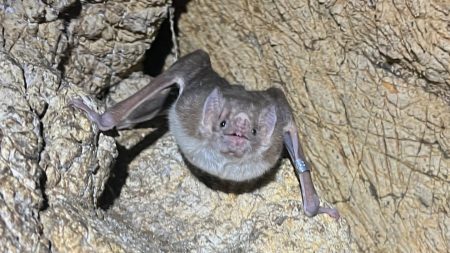The discovery of ultrasonic clicks emitted by water-stressed plants has opened a new dimension in our understanding of plant-animal interactions. Recent research indicates that these clicks, inaudible to the human ear, play a significant role in the egg-laying choices of female moths, particularly the Egyptian cotton leafworm moth. These moths, equipped with sensitive hearing, appear to utilize these acoustic cues to identify plants struggling with dehydration and subsequently avoid them as potential hosts for their offspring. This behavior suggests a sophisticated level of sensory perception and decision-making in these insects, highlighting the complex interplay between plants and their insect counterparts.
Initial experiments with speakers broadcasting the distressed clicks of a dehydrated tomato plant revealed a counterintuitive finding: the moths were drawn to the source of the sound, seemingly preferring to lay their eggs near the stressed plant’s simulated presence. However, the introduction of actual plants into the experimental setup dramatically altered this preference. When presented with a choice between a hydrated and a dehydrated tomato plant, the moths consistently chose the healthy, silent plant to deposit their eggs. This shift in behavior suggests that the moths are not simply responding to the presence of plant-related sounds but are integrating auditory information with other sensory inputs, such as visual and olfactory cues, to make informed decisions about the suitability of a host plant.
The apparent contradiction between the moths’ attraction to the recorded clicks and their avoidance of the actual dehydrated plant can be explained by considering the context of the sensory information. In the absence of visual and olfactory cues, the recorded clicks represent the only indication of a potential host plant. The moths, driven by their instinct to reproduce, are drawn to this solitary clue, indicating a predisposition to seek out plants as potential egg-laying sites. However, when presented with both auditory and other sensory information, the moths can make a more nuanced assessment. The combination of distressed clicks and the visual/olfactory cues associated with a dehydrated plant triggers an avoidance response, leading the moths to select the healthier, silent alternative.
This research underscores the importance of considering the interplay of multiple sensory modalities in understanding animal behavior. The moths’ response to plant clicks is not a simple attraction or repulsion but a complex evaluation based on the integration of multiple sensory inputs. The ability to distinguish between a healthy and a stressed plant based on a combination of acoustic and other cues significantly impacts the moths’ reproductive success. By avoiding plants struggling with dehydration, the moths increase the likelihood that their offspring, upon hatching, will have access to a nutritious and stable food source.
The evolutionary implications of this behavior are profound. The moths’ innate ability to detect and interpret plant stress signals suggests a long history of co-evolution between plants and insects. The moths’ sensitive hearing, tuned to the specific frequency range of plant distress calls, represents a remarkable adaptation that enhances their survival and reproductive success. This adaptation likely arose through natural selection, favoring individuals who could effectively identify healthy host plants and avoid those less likely to support their offspring. The plants themselves may also benefit from this interaction, as the moths’ egg-laying choices could influence the distribution of herbivore pressure, potentially reducing the impact on stressed individuals.
The discovery of this acoustic interaction between plants and insects opens up exciting new avenues for research. Scientists are now investigating whether this phenomenon is widespread among other insect species and plant families. Further research is also exploring the potential agricultural applications of this knowledge. For instance, artificially broadcasting the distress calls of plants could potentially deter moths from laying eggs on healthy crops, offering a novel approach to pest management. This discovery highlights the intricate web of communication that exists within ecosystems and underscores the importance of understanding these complex interactions for both ecological and practical purposes. It also emphasizes the potential for further discoveries in the realm of plant-animal communication, reminding us that the natural world still holds many secrets waiting to be unveiled.















